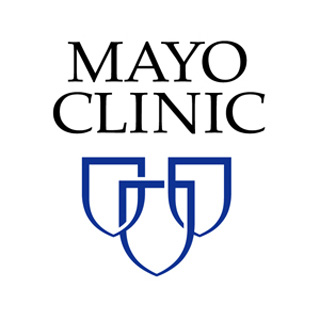Argus II/ORCAM Device Study
| Status: | Recruiting |
|---|---|
| Conditions: | Ocular |
| Therapuetic Areas: | Ophthalmology |
| Healthy: | No |
| Age Range: | 18 - Any |
| Updated: | 11/14/2018 |
| Start Date: | August 31, 2017 |
| End Date: | October 2019 |
| Contact: | Heidi S Rubin, CCRP |
| Email: | rubin.heidi@mayo.edu |
| Phone: | 507-538-8119 |
Utility of Visual Pattern Recognition Technology in Retinal Prosthesis Patients: the ARGUSII/ORCAM Device Study
This study is being done to determine if wearable text-to-speech (TTS) and visual pattern
recognition (VPR) technology can be used to extend the capabilities of the Argus II to allow
patients to read and recognize faces and objects.
The Argus II retinal prosthesis can restore rudimentary forms of vision to patients with bare
light-perception vision. Using the prosthesis, patients can identify obstacles, handles,
switches, eating utensils and demonstrate improved navigation when used in conjunction with
other ambulation-assist tools. Current limits in the resolution of the device prevent useful
reading or face recognition. The FDA has approved the Argus II as a humanitarian device.
Present-day wearable text-to-speech converters are also capable of object and face
recognition. Such systems have been developed to assist with these tasks in patients with
severe low-vision. ORCAM is a commercially-available eyeglass-mounted visual pattern
recognition system capable of converting photographs of text to speech. It is comprised of a
camera, a small belt-worn computer, pattern recognition software and a small audio
transducer. ORCAM can acquire the image of a sheet of paper and read the text to the user
through a small speaker adjacent to the ear. In addition, ORCAM can be trained to recognize
faces and speak the name of the individual to the user. ORCAM can also be used to recognize
everyday products after being programmed.
recognition (VPR) technology can be used to extend the capabilities of the Argus II to allow
patients to read and recognize faces and objects.
The Argus II retinal prosthesis can restore rudimentary forms of vision to patients with bare
light-perception vision. Using the prosthesis, patients can identify obstacles, handles,
switches, eating utensils and demonstrate improved navigation when used in conjunction with
other ambulation-assist tools. Current limits in the resolution of the device prevent useful
reading or face recognition. The FDA has approved the Argus II as a humanitarian device.
Present-day wearable text-to-speech converters are also capable of object and face
recognition. Such systems have been developed to assist with these tasks in patients with
severe low-vision. ORCAM is a commercially-available eyeglass-mounted visual pattern
recognition system capable of converting photographs of text to speech. It is comprised of a
camera, a small belt-worn computer, pattern recognition software and a small audio
transducer. ORCAM can acquire the image of a sheet of paper and read the text to the user
through a small speaker adjacent to the ear. In addition, ORCAM can be trained to recognize
faces and speak the name of the individual to the user. ORCAM can also be used to recognize
everyday products after being programmed.
The Orcam device will be mounted onto the Argus II eyeglasses. The subject will be asked to
use the Orcam device with and without the Argus II. After a half-day interactive training
session with the Orcam device, the investigators will interview the subject with a
questionnaire. The investigators will then contact the subject every two weeks via a
telephone call for two months (4 phone interviews). The investigators will then ask the
subject to return to Mayo Clinic to demonstrate their ability to use the Argus II and Orcam
together and separately. These sessions will be videotaped.
use the Orcam device with and without the Argus II. After a half-day interactive training
session with the Orcam device, the investigators will interview the subject with a
questionnaire. The investigators will then contact the subject every two weeks via a
telephone call for two months (4 phone interviews). The investigators will then ask the
subject to return to Mayo Clinic to demonstrate their ability to use the Argus II and Orcam
together and separately. These sessions will be videotaped.
Inclusion Criteria:
- Diagnosis of advanced retinitis pigmentosa
- Subjects must have an Argus II device implanted to be eligible for this study
- Subjects must be familiar with using their Argus II device
Exclusion Criteria:
- No Argus II implant
We found this trial at
1
site
200 First Street SW
Rochester, Minnesota 55905
Rochester, Minnesota 55905
507-284-2511

Phone: 507-538-8119
Mayo Clinic Rochester Mayo Clinic is a nonprofit worldwide leader in medical care, research and...
Click here to add this to my saved trials